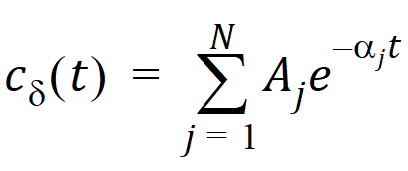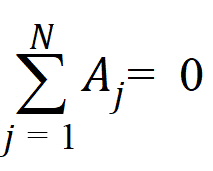The Deconvolution object assumes a unit impulse response function (UIR) of the form:

where N is the number of exponential terms.
Use the Exponential Terms panel to enter values for the A and alpha parameters. For oral administration, enter values such that:

Required input is highlighted orange in the interface.
None: Columns mapped to this context are not included in any analysis or output.
Sort: Categorical variable(s) identifying individual data profiles.
Parameter: Data variable(s) to include in the output worksheets.
Value: A (coefficients) and Alpha (exponential) parameter values.
A and alpha parameters are listed sequentially based on the number of exponential terms selected. If one exponential term is selected, each profile has an A1 and an Alpha1 parameter. If two are selected, each profile has A1 and A2 Alpha1 and Alpha2 parameters.
Rules for using an external exponential terms worksheet:
Sort variables must match the sort variables used in the main input dataset.
Parameter column must match the number of exponential terms selected in the Exponential Terms menu. For example, if three exponential terms are selected, then each profile in the worksheet must have three A parameters and three alpha parameters.
Units used for A and alpha parameters must match the units used for concentration and dosing data. For example, If concentration data has units ng/mL and dosing data has units mg, then the A units must be ng/mL/mg, or the input data or dosing data should be converted (using Data Wizard Properties) to have consistent units. If time units are hr, then alpha units are 1/hr.
If UIR parameters are unknown but a dataset is available that represents the impulse response, parameters can be estimated by fitting the data with PK model 1, 8, or 18 (for N=1, 2, or 3, respectively). Since UIR is the response to one dose unit, for model 1 (one-compartment), the inverse of the model parameter V is used for the UIR parameter, i.e., A1=1/V. For model 8 (two-compartment), the model parameters A and B should be divided by the stripping dose to obtain A1 and A2 for the UIR, similarly for model 18 (three-compartment). However, if dose units are different than concentration mass units, ‘A’ parameters must be adjusted so the units are in concentration units divided by dose units. For the example in the prior bullet, if A=1/V from model 1 has units 1/mL, then ‘A’ must be converted to ng/mL/mg before it is used as the UIR, A=10^6/V.